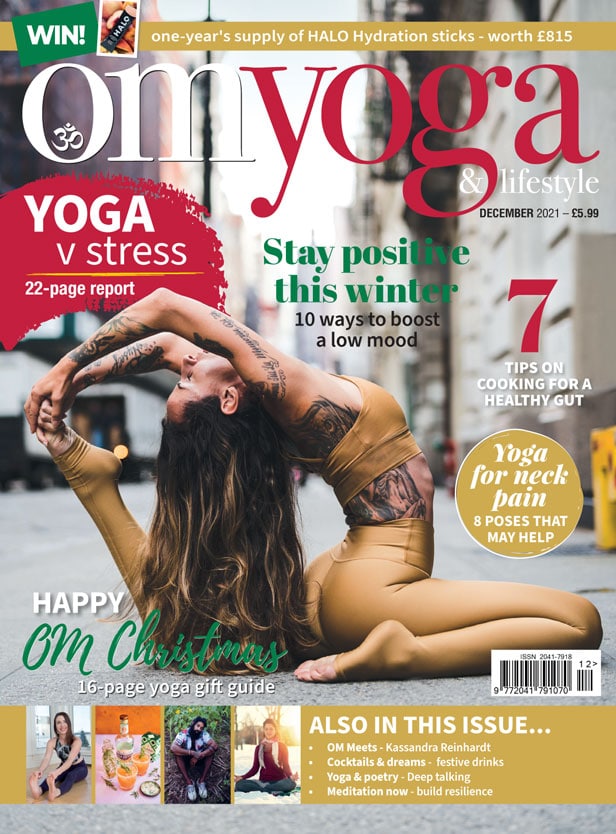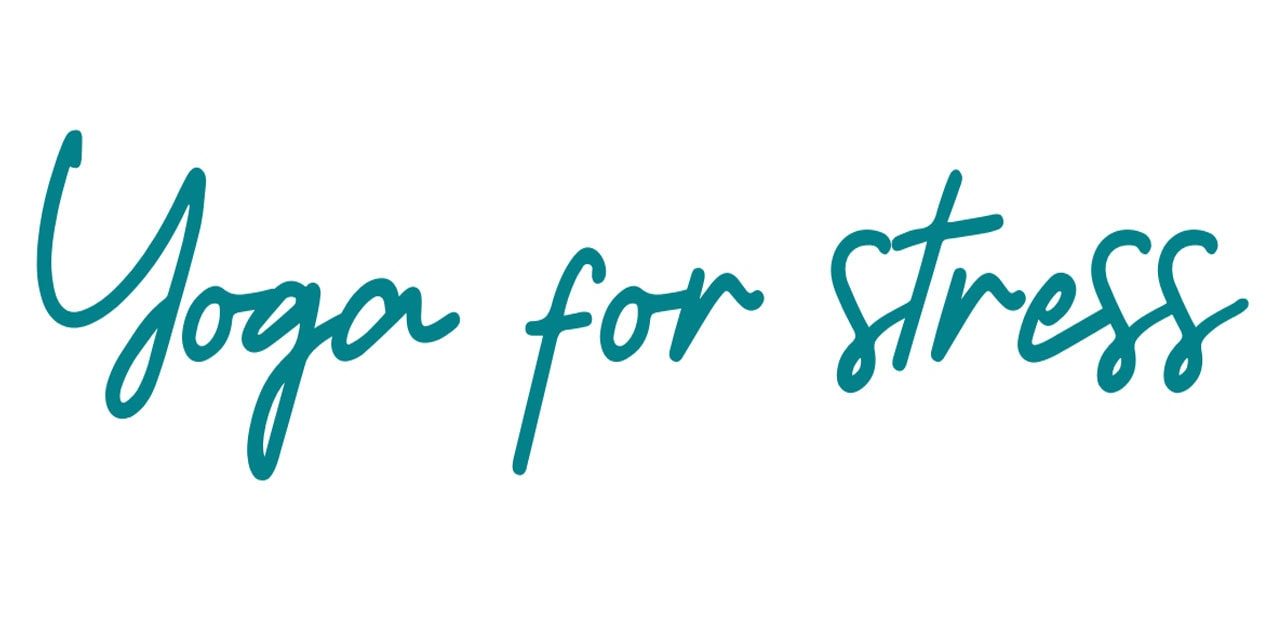
A simple Iyengar Yoga sequence for easing stress. By Helen Ayling
We all know what it’s like to feel stressed, but it’s not easy to describe exactly what stress means. Situations or events that put pressure on us and our reaction to being placed under pressure, or life events, bereavement, loss and trauma…these can all cause stress that can overwhelm us and develop into depression and/or anxiety.
Developing your emotional resistance so that you’re better at coping with tough situations when they do happen, is the essence of our yoga practice. From personal experience over the last 14 months in managing trauma and bereavement, my yoga practice has enabled my recovery. Each group of yoga postures develops the body in different yet reciprocal ways and each pose has different qualities: grounding, energising, strengthening, stimulating, calming.
A balanced practice can help us build strength, resilience and hope. Physically, the body reacts to stress and practicing these postures will help to undo the gripping in the internal body as well as the external.
Supta Baddha Konasana
(Reclining Bound Angle Pose)
Supta Baddha Konasana is a reclining pose, which stimulates the lower abdominal organs, as well as the heart, helping to improve blood flow and alleviate symptoms of stress, depression and anxiety. This pose can be practiced without props. Lie on your back, legs extended, bend the knees to the sides. Support your knees with blankets, a rolled-up mat or bolsters. Use a belt around lower back and thighs and ankles if you wish. Stay for 5-10 minutes.
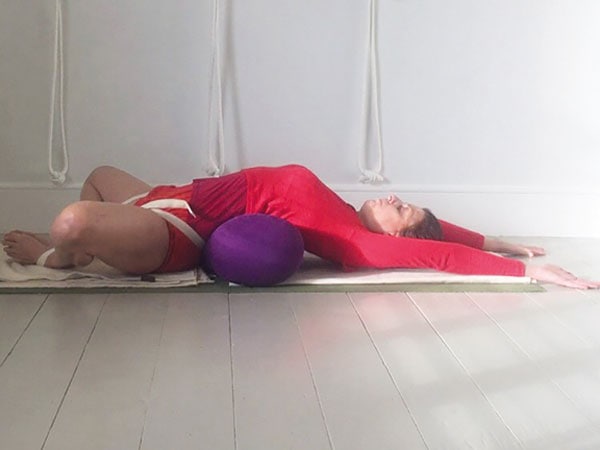
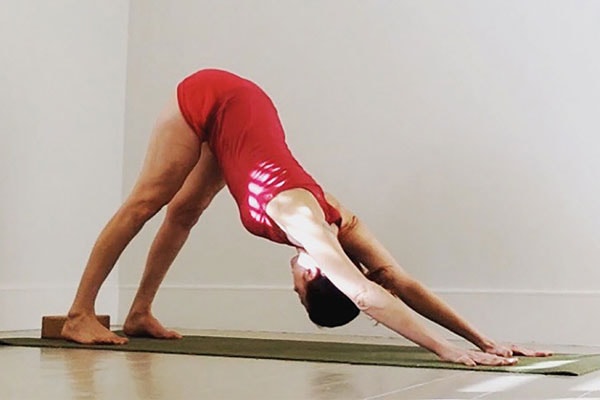
Adho Mukha Svanasana
(Dog Face Down Pose)
With your hands and knees on the floor, straighten your legs as you lift the pelvis up. Push the floor away to extend the arms and lift and lengthen the torso. Keeping your arms straight, release your neck. You can rest your head on a support if you wish. Adjust the height of the support to rest the head easily. Keep the arms and legs strong and the face soft. Hold for 2-5 minutes.
Setu Bandha Sarvangasana
(Bridge Pose)
Take a tall brick or two bricks as shown in the photo. Place a three-folded blanket widthways under your shoulders. Lie down with legs slightly bent feet to wall. You can lift up in Chatush Padasana (lifting the hips and holding the backs of the heels) or walk feet up wall to place the pelvis on the brick. See that your shoulders and head are resting at the same level. Straighten your legs with feet apart on the wall and work towards bringing the legs together. Stay for 5-10 minutes. The asana should not be uncomfortable — don’t stay in the pose if it is.
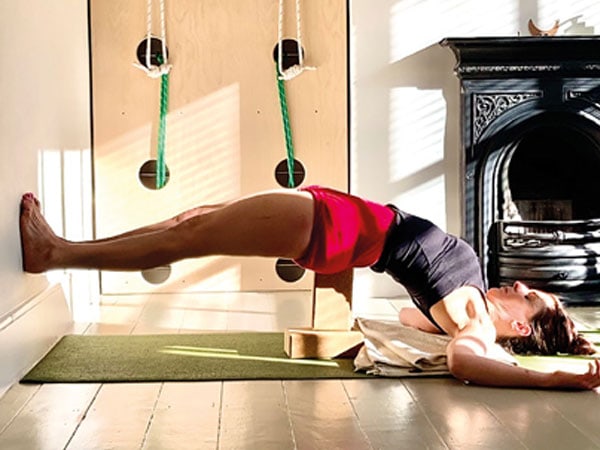
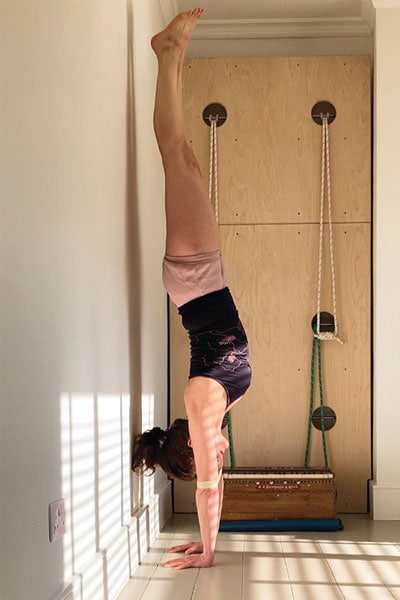
Adho Mukha Vryksasana
(Handstand) (at the wall)
Place your hands a few inches away from a wall. From Adho Mukha Svanasana, walk the feet closer to the wall, lifting the hips. Raise one leg straight up toward the ceiling, and push off the other bent leg to kick up and take the feet to the wall into handstand. Keep both arms straight and stretch the heels up the wall. Spread the weight in the palms and extend up from the arms through the sides of the chest up to the feet. Lift your head slightly to look at the wall. Hold for up to one minute. In this photo I have used a belt around my elbows for more stability. If you can’t get into handstand, try kicking up several times, working on taking the pelvis toward the wall as you kick up; then repeat Adho Mukha Svanasana.
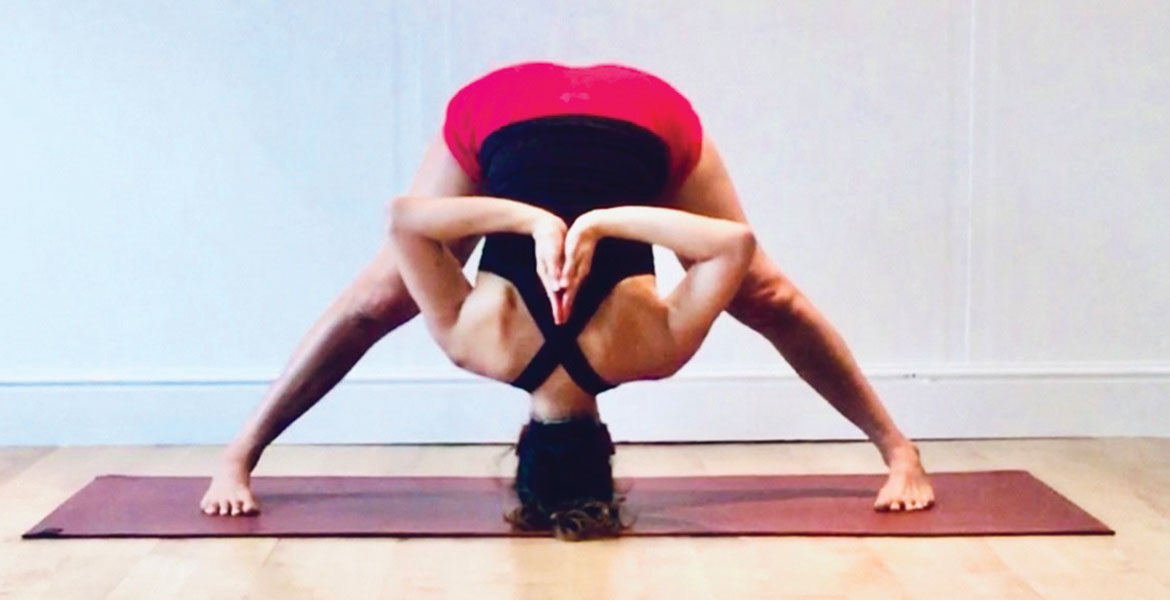
Prasarita Padottanasana
(Wide Angle Forward Bend)
Stand on your mat with the feet wide apart. Keep the inner and outer feet active and lift the leg muscles, inserting femur heads to hip sockets, as you bend forwards from the hips. Keep the pelvic bones lifted, navel to spine as you move your torso towards the floor. Support the head if needed. The hands can rest on the floor or behind the back as shown below, in Paschimar Namaskar. This variation helps release tension in the dorsal area of the spine. Keep the weight evenly distributed in your feet, with the legs engaged. A forward bend is good for releasing tension in the head and neck. It therefore helps in reducing the stress around the neck and shoulders; here the breathing is enhanced and this increases oxygenated blood supply which helps to reduce the fatigue in the body and muscles. Inversions are enormously beneficial to the nervous system. Having the head below the heart is soothing for the nervous system and can reduce stress. Fresh, oxygenated blood is sent to the brain which can help manage stress, anxiety, depression, and insomnia.
End your practice with Savasana. You may cover the eyes if required.
Please Note: If you are suffering from severe and debilitating anxiety consider consulting with your doctor before practicing the poses.
The poses can be adapted for different body types and abilities and your teacher will be able to help you with this. In practicing these poses there is the possibility of sustaining a physical injury, so please take care as you are responsible for the risks involved.
Helen Ayling is a Level 3 Iyengar yoga teacher based in Worthing, UK. She has been practicing for 21 years and teaching for 11. Follow her on Instagram: @_yogashtha Find out more about Iyengar yoga and find a teacher near you at iyengaryoga.org.uk


